








| Leiobunum rotundum (Latreille, 1798) |









|
|
Scientific name: Leiobunum rotundum (Latreille, 1798) Common name: French name: Faucheur arrondi, Faucheur hémisphérique. Order: Opiliones Family: Sclerosomatidae Size: 5 to 7 mm for females, 3.5 for males. The legs are very long, up to 50 mm and even 58 mm for legs II. Biotope: Preference for damp habitats. You can find Leiobunum rotundum on the north side of trunks, on walls and fences, and also among grasses and in the litter. Web: No web. Observation period: Adults are observed from late July to late November. You can sometimes find large groups of up to 400 harvestmen. Geographic area: Europe, North Africa, the Canary Islands. |
Leiobunum rotundum, as indicated by its scientific name, shows a rounded body, slightly more elongated on females. The legs are long, thin and black. There are black patches on the trochanters. There are granules on the coxae. The ocularium is smooth and black with a thin and pale central line. As for other members of the Leiobunum genus there are no spines on the cephalic part of the body. There is an important sexual dimorphism. Females are pale brown with a dark and rectangular dorsal mark (or saddle), with straight and parallel edges. It slightly widens at the rear drawing an anchor shape. The under side of the body is whitish. There is also a dark mark located just ahead of the ocularium. This mark widens at the front. Males are a uniform reddish brown colour which contrasts with the black ocularium. Harvestmen feed on small arthropods with soft bodies. They can also feed on dead insects. Leiobunum blackwalli differs by its light coloured ocularium with a black central line. The dorsal mark on females is rather triangular by widening towards the rear. |
| [To know more about the Leiobunum rotundum] [Next picture] [Top] |
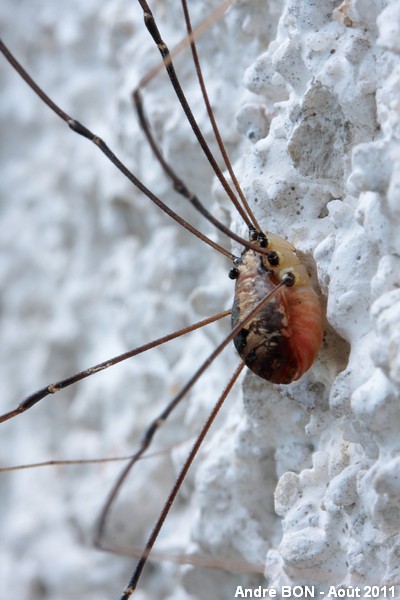
|
I have not observed any large group of Leiobunum rotundum in my garden. I have only observed a single specimen against the north-facing wall of my house. |
| [To know more about the Leiobunum rotundum] [Next picture] [Previous picture] [Top] |

|
You can clearly see the black and smooth ocularium on this picture. |
| [To know more about the Leiobunum rotundum] [Next picture] [Previous picture] [Top] |
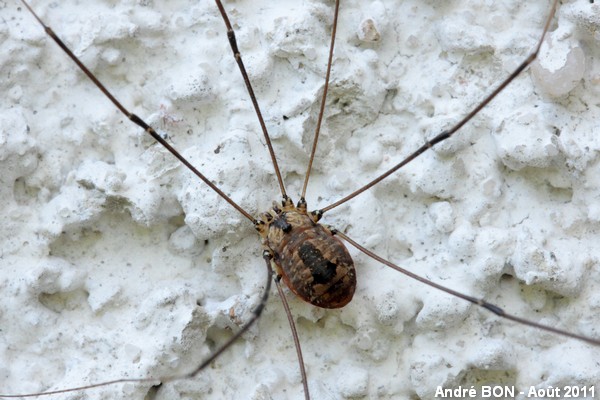
|
You can see all the typical characteristics of this female on this upper side view. The body is rounded and slightly elongated. The ocularium is smooth and black with a thin pale central line. The saddle is rectangular and widens at the rear drawing an anchor shape. There is a black mark ahead of the ocularium. The trochanters show black patches. I just need to take one picture of a male now. |
| [To know more about the Leiobunum rotundum] [Next picture] [Previous picture] [Top] |
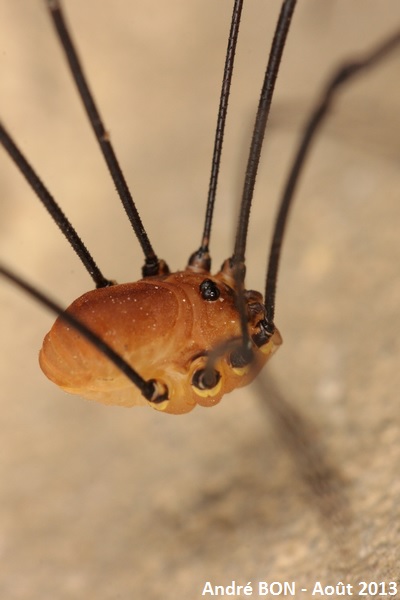
|
Well, here is one male with its black ocularium contrasting with its beautiful orange ground colour. |
| [To know more about the Leiobunum rotundum] [Next picture] [Previous picture] [Top] |

|
The length of the legs is really impressive. |
| [To know more about the Leiobunum rotundum] [Next picture] [Previous picture] [Top] |
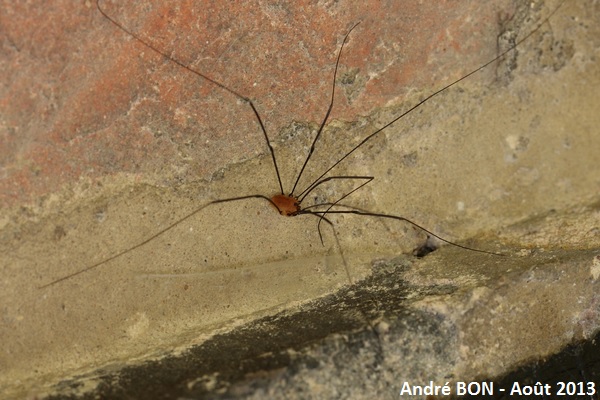
|
Here is a view a little more in the far to see the entire harvestman. |
| [To know more about the Leiobunum rotundum] [Next picture] [Previous picture] [Top] |
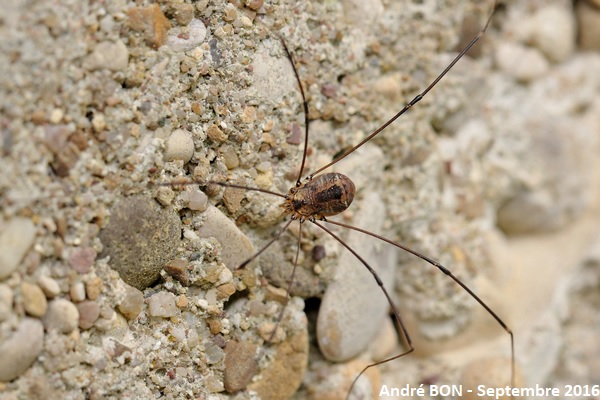
|
A female. This one lost its right leg of the second pair. |
| [To know more about the Leiobunum rotundum] [Next picture] [Previous picture] [Top] |
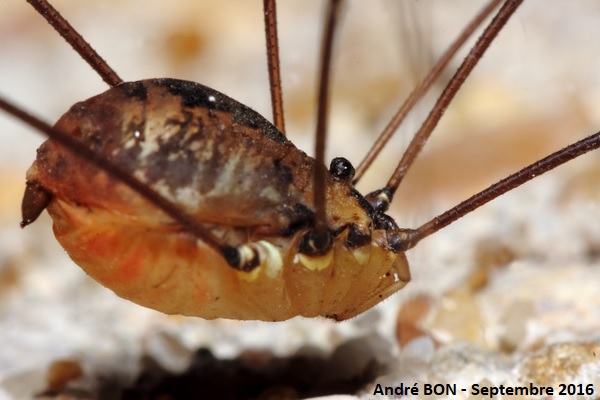
|
Has the point at the rear of the body something to deal with egg-laying? |
| [To know more about the Leiobunum rotundum] [Previous picture] [Top] |
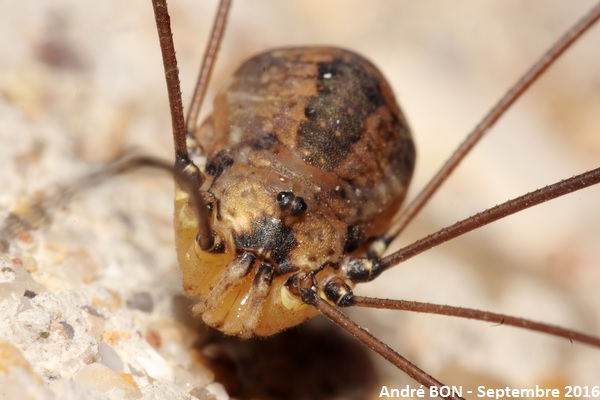
|
Close-up front view. |